
The Yangtze or Yangtze is the longest river in Eurasia and the third longest river in the world, and it is the longest in the world that flows completely in one country. It originates in the Zari Mountains in the Tanggula Mountains of the Qinghai-Tibet Plateau and flows roughly east to the East China Sea for a total length of 6,300 kilometers. It is the seventh-largest river in the world in terms of flow. Its drainage area accounts for one-fifth of China’s land area and is house to nearly one-third of the country’s population.
The Yangtze River has played an important part in China‘s history, culture, and economics. The river has been used for centuries for water, irrigation, sanitation, transportation, industry, boundary-marking, and conflict. The wealthy Yangtze Delta contributes up to 20% of China’s GDP. The Three of the Gorges Dam on the Yangtze River is the world’s biggest operational hydroelectric power facility. The Chinese government declared in mid-2014 that it was constructing a multi-tier transportation network, including trains, highways, and airports, to establish a new economic belt around the river.
Flowing through a diverse ecosystem, the Yangtze River is home to many endangered and endemic species, including the Chinese crocodile, the narrow-finned finless porpoise and the now-extinct Yangtze River (or Baiji) river dolphin and Chinese white sturgeon, as well that wild Yangtze sturgeon extinct.
The etymology of the Yangtze River
Cháng Jiāng is the formal name of the Yangtze River. However, the Chinese gave different names to the upper part of the river, up to its confluence with the Min at Yibin, Sichuan.
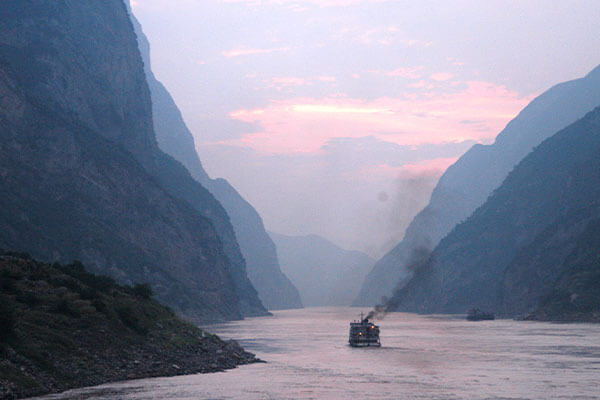
“Traditionally, the Chinese government has identified the source as the Tuotuo tributary at the foot of a glacier west of the Geladandong Mountains in the Tanggula Mountains.
The true source of the Yangtze River, the longest river hydrographically from the sea, is located in the Jari Mountains, at the source of the Qu Dam tributary, about 325 kilometres (202 miles) southeast of Geladandong.
Discovered in the late 20th century, this spring is located in a wetland at 32°36′14″N 94°30′44″E southeast of Chadan Township, Zaduo County, Yushu Prefecture, about an altitude of 5,170 meters (16,960 feet), Geladandong, Qinghai as the historic religious source of the Yangtze River, and the source is still known as the source of the Yangtze River since the discovery of the source of Zari Mountain.
Tracing the Evolution of China’s Iconic Waterway, Yangtze River
Geologic history
even though the mouth of the Yellow River has varied greatly from north to south on the Shandong Peninsula in historical records, the Yangtze River has remained largely unchanged. However, based on studies of sedimentation velocities, the current dump site is unlikely to date to the late Miocene (ca. 11 Ma). Before this, its source flowed south along or near the present course of the Red River in Tokyo Bay.
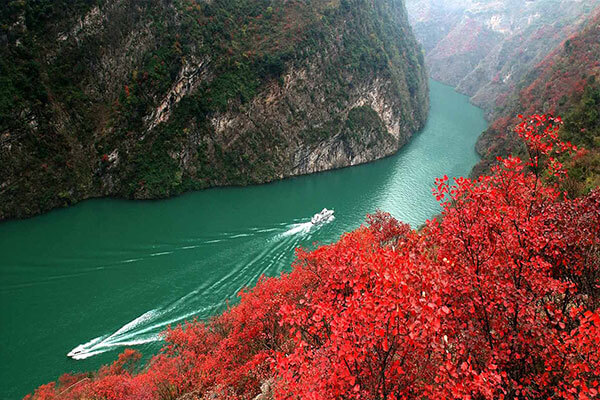
History Early
The Yangtze River is an important cultural origin of southern Japan and China. Human activity has been documented in the Three Gorges area as early as 27,000 years ago, and by the 5th millennium BCE, the lower reaches of the Yangtze River was the main population center occupied by the Hemudu and Majiabang cultures, which were both the first rice farmers.
The central basin of the Yangtze River is home to a complex Neolithic culture. Later, it became part of the first integration of the Yangtze River Basin into the cultural circle of North China. (Northern Chinese have been active there since the Bronze Age).
Steam the Age
The Jardine was the first steamboat to navigate the river, built for Jardine, Matheson & Co. in 1835. architecture. The small boat will carry passengers and mail between Lintan Island, Macau and Whampoa. However, the Chinese, who strictly enforced the rules regarding foreign ships, were not happy with a “fireboat” sailing on the Canton River. An order from the acting governor of Guangdong province warned her that she would be shot if she attempted to embark on the journey.
During Jardine’s first test voyage from Linding Island, the Borg’s side batteries opened fire and she was forced to turn back. Chinese authorities issued new warnings and insisted that the vessel leave Chinese waters. Anyway, the Jardine required repairs and was sent to Singapore.
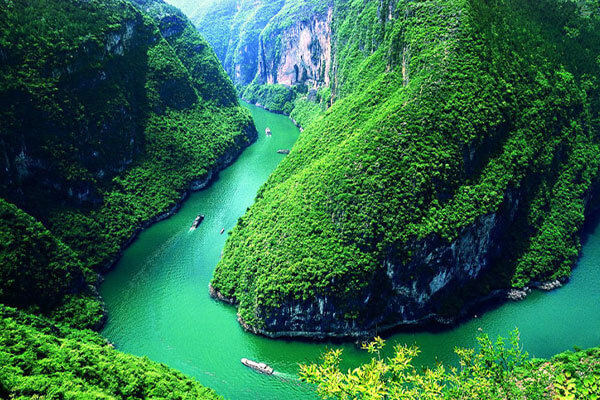
Navigate the river
The upstream steamer arrived late, and this part was from Yichang to Chongqing. Cool air from melting snow in the Himalayas creates dangerous seasonal currents. But summer is more navigable, and the three canyons, described as “150 miles of passages like the narrow gorges of an hourglass,” present the perilous threat of cross-currents, whirlpools and whirlpools that pose a major challenge to efforts creating steamships. Moreover, Chongqing is 700-800 feet above sea level and needs a strong motor to go up the river.
Garbage Voyage accomplished the feat upstream by using 70-80 trackers attached to harnesses to pull the boat upstream through some of the three canyons’ most dangerous and deadly sections.
When the Yantai Convention of 1876 opened Chongqing as a consulate, Archibald John Little became interested in sailing the upper Yangtze but stipulated that it was not until the steamer had successfully ascended to this point along the river that he could begin foreign trade.
Ships of Navy
The Amethyst event, also known as the Yangtze River Incident, was a historical event involving the Royal Navy ships HMS Amethyst, HMS London, HMS Wang Hao and HMS Black Swan on the Yangtze River for over three months during the Chinese Civil War in 1949.

Events of the Contemporary
In August 2019, Welsh adventurer Ash Dykes became the first someone to complete the 4,000-mile trek along the river, walking from source to mouth in 352 days.
Hydrology of the Yangtze River
Periodic floods
Thousands and thousands of human beings live in the floodplain of the Yangtze River Basin, an area that is naturally flooded each summer and only habitable if protected by levees. Floodwaters large enough to overwhelm the levees caused great suffering to the people who lived and farmed there. Notable floods include the floods of 1931, 1954, and 1998.
The Central China Flood of 1931, or the Central China Flood of 1931, was a series of floods that occurred during the Republic of China period. Floods are widely considered to be among the deadliest natural disasters on record and almost certainly the deadliest of the 20th century (excluding epidemics and famines). The total death toll is estimated at between 145,000 and 3.7 million to 4 million. The Yangtze River flooded again in 1935, causing an enormous loss of life.
From September to June 1954, the Yangtze River flood was a collection of catastrophic floods mainly in Hubei province.

The Yangtze River Flood of 1998 was a series of catastrophic floods that occurred along the Yangtze River from mid-June to early September 1998.
The Yangtze River in 2020, experienced the heaviest rainfall since 1961, with rainfall in June and July 79% above the average for the past 41 years. According to a new theory, a sudden drop in greenhouse gas and aerosol emissions due to shutdowns during the COVID-19 pandemic is largely responsible for the downpours.
Degradation of the river
Beginning in the 1950s, dams and levees were constructed for flood control, soil rehabilitation, irrigation, and control of disease vectors, such as blood snails, which cause schistosomiasis. More than a hundred lakes are thus cut off from the major rivers.
There are gates between the lakes that can be opened in case of flooding. However, despite being forbidden to settle there, farmers and settlements entered the lands along the lake. In the event of flooding, it is impossible to open the door as this would cause considerable damage. As a result, the lake partially or completely dried up. Baidang Lake, for example, shrank from 100 square kilometers (39 square miles) in the 1950s to 40 square kilometers (15 square miles) in 2005. Zhangdu Lake has shrunk to a quarter of its original size.
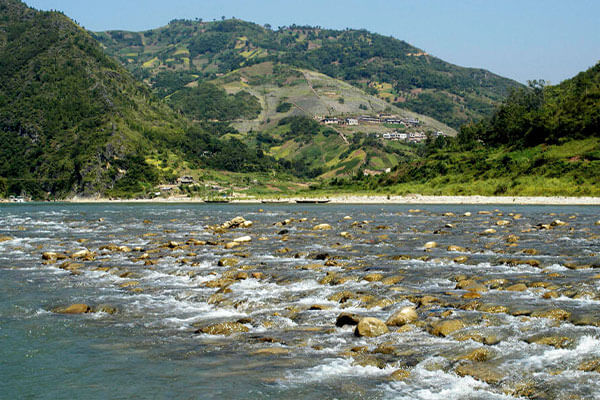
Contribution to pollution in the ocean
Allegedly to The Ocean Cleanup, a Dutch environmental research foundation that makes specialty in ocean pollutants, the Yangtze River generates more ocean plastic pollution than any other place. Along with nine other rivers, the Yangtze carries 90% of all ocean plastic.
Reconnecting lakes
In 2002, a pilot program was started to connect the lake to the Yangtze River to increase biodiversity and mitigate flooding. The first batch of lakes to be restored in 2004 were Zhangdu Lake, Tian’e Island and Honghu Lake in Hubei Province, in the middle of the Yangtze River. In 2005, Baidang Lake in Anhui also resumed water supply.
Reconnecting lakes improves allows fish and water quality to migrate from rivers to lakes, replenishing their numbers and genetic resources. Trials have also shown that reconnecting the lake reduces flooding. The new method also benefits farmers financially.
Crossings the Yangtze River
Up to 1957, there was no bridge over the Yangtze River between Yibin and Shanghai. For thousands of years, travelers have crossed the river by ferry. Crossing the border can sometimes be dangerous, as evidenced by the Central Allen disaster (October 15, 1945).
The river is a huge geographical barrier separating the south and north of China. In the primary 1/2 of the 20th century, passengers on trains bound for Guangzhou and Shanghai from Beijing had to get off at Hanyang and Pukou respectively, take a ferry to cross the river, and then head west to train from Wuchang or Nanjing.
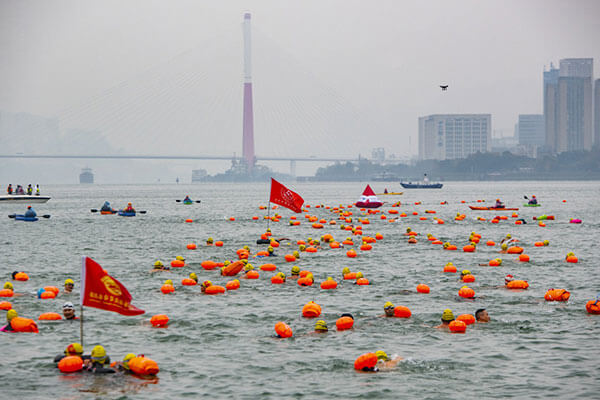
After the founding of the human Republic of China in 1949, Soviet engineers participated in designing and producing the Wuhan Yangtze River Bridge, a dual-purpose road-rail bridge. It was built from 1955 to 1957 And changed into the first bridge over the Yangtze River. The Second Cross Bridge is a single-track railway bridge built in upper Chongqing in 1959. The Nanjing Yangtze River Bridge is also a road-rail bridge and the first bridge in Nanjing to cross the Yangtze River underpass. It was built after the Sino-Soviet split without foreign aid.
Later, road-rail bridges were built in Zhicheng (1971) and Chongqing (1980).
Several power line intersections were also built across the river:
- The Wuhan Yangtze River Bridge was the first bridge over the Yangtze River and was completed in 1957.
- The Nanjing Yangtze River Bridge is a girder bridge completed in 1968.
- The Jiujiang Yangtze River Bridge is an arch bridge that was completed in 1992.
- Yichang Yangtze River Road Bridge is a suspension bridge near Gezhouba Gate and was completed in 1996.
- The Sutong Yangtze River Bridge, located between Nantong and Suzhou, was completed in 2008 and is one of the longest cable-stayed paul in the world.
- An arch bridge in Chongqing, the Caiyuanba Bridge, was completed in 2007.
- An arch bridge in Chongqing, the Caiyuanba Bridge, was completed in 2007.
- The Anqing Yangtze River Cable-stayed Bridge was completed in 2005.

Dams of the Yangtze River
Since 2007, two dams have been built on the Yangtze River: the Three Gorges Dam and the Gezhouba Dam. The Three Gorges Dam is the world’s biggest electric power station by installed capacity, with an installed capacity of 22.5 GW. Several dams are in operation or under construction at the Jinsha River’s top reaches. Among them, Xiluodu Dam is the world’s third-largest power station. Baihetan Dam, scheduled to be commissioned in 2021, will become the second-largest power station after the Three Gorges Dam.
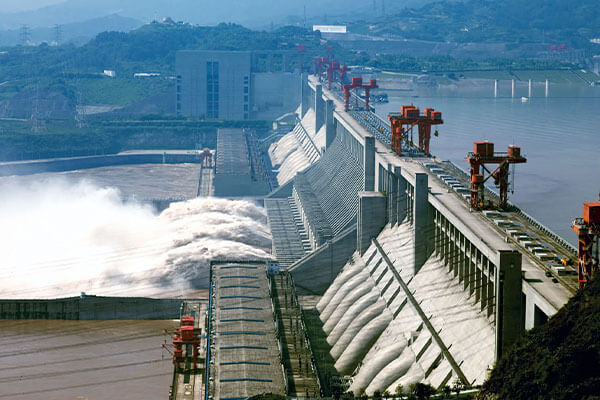
Wildlife in the Yangtze River
The Yangtze River Basin is rich in species, including many endemics. Many of them are seriously threatened by human activities.
Fish
In 2011, there were 416 known species of fish in the Yangtze River basin, of which 362 were pure freshwater fish. The rest also comes from brackish or brackish water, Like estuaries or the East China Sea. This puts it among the rich rivers in Asia and by far the most species-rich river in China. (In contrast, the river Pearl has nearly 300 species of fish and the Yellow River has 160). There are 178 endemic fish species in the Yangtze River Basin.
Found only in some river basins, especially in the upper reaches (above Yichang and below the source of the Qinghai-Tibet Plateau), 279 species are abundant, including 147 Yangtze River endemics and 97 strictly endemics (only found in this part of the basin).
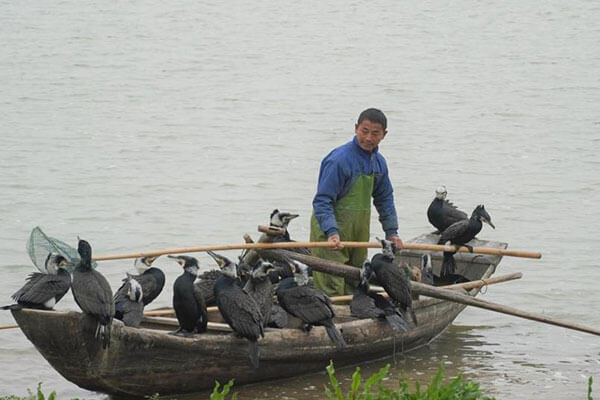
Other animals
Due to commercial use, tourism, and pollution of the river, the Yangtze is home to several critically endangered megafauna (in addition to fish): the narrow-reef finless porpoise, the baiji (Yangtze dolphin), the Chinese alligator, the giant crocodile softshell turtle and the Chinese giant salamander turtle. It is the only place outside of the United States where alligator and beluga whale species are native. In 2010, the population of finless porpoises in the Yangtze was 1,000.
The Best Hotels Near Yangtze River
- King’s Landing BnB
- Sheraton Chongqing Hotel
- The Westin Chongqing Liberation Square
- Glenview ITC Plaza Chongqing
- Somerset Yangtze River Chongqing
- Baixiang Hotel
- Jinjiang Business Hotel



